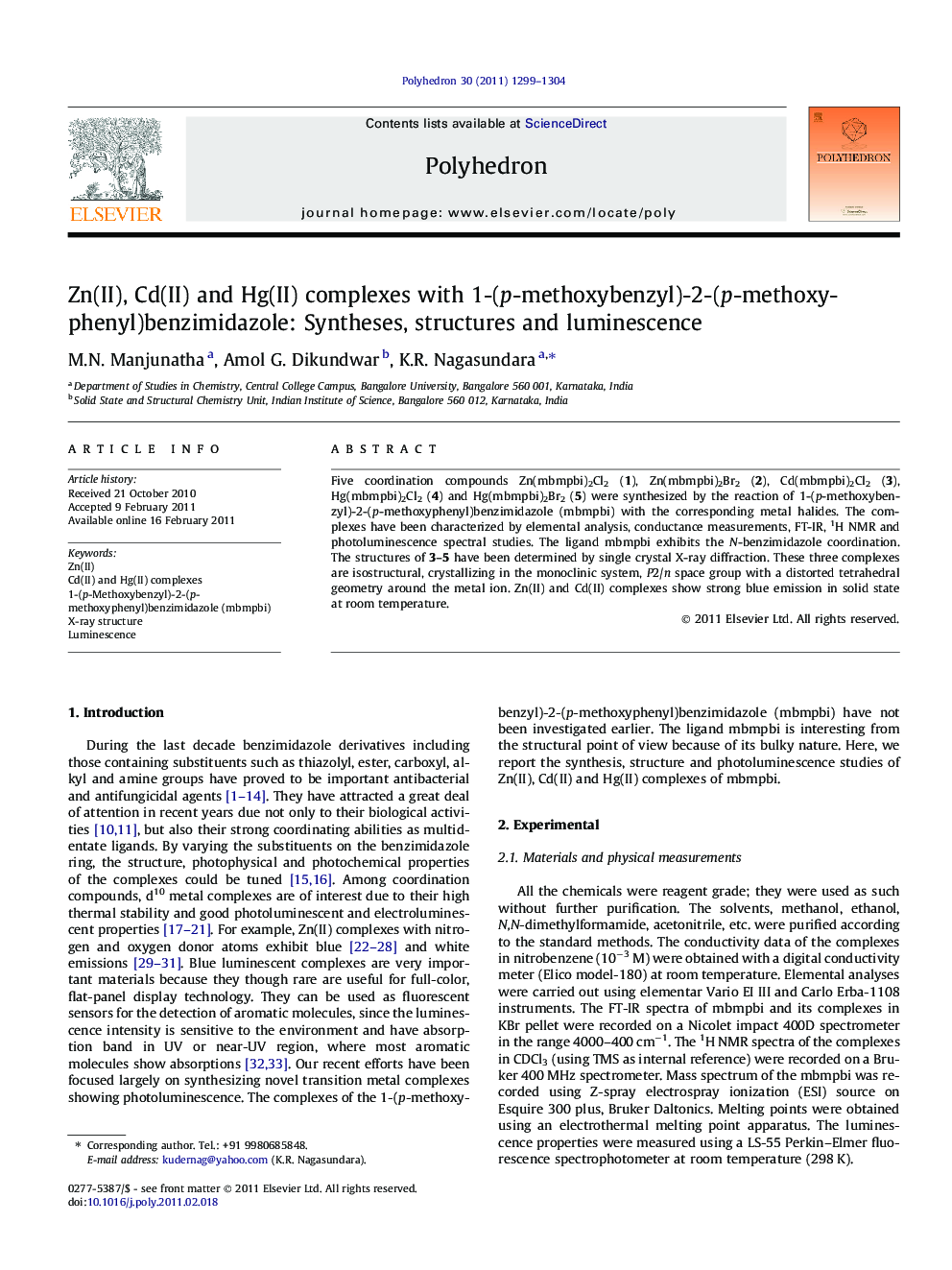| Article ID | Journal | Published Year | Pages | File Type |
|---|---|---|---|---|
| 1336291 | Polyhedron | 2011 | 6 Pages |
Five coordination compounds Zn(mbmpbi)2Cl2 (1), Zn(mbmpbi)2Br2 (2), Cd(mbmpbi)2Cl2 (3), Hg(mbmpbi)2Cl2 (4) and Hg(mbmpbi)2Br2 (5) were synthesized by the reaction of 1-(p-methoxybenzyl)-2-(p-methoxyphenyl)benzimidazole (mbmpbi) with the corresponding metal halides. The complexes have been characterized by elemental analysis, conductance measurements, FT-IR, 1H NMR and photoluminescence spectral studies. The ligand mbmpbi exhibits the N-benzimidazole coordination. The structures of 3–5 have been determined by single crystal X-ray diffraction. These three complexes are isostructural, crystallizing in the monoclinic system, P2/n space group with a distorted tetrahedral geometry around the metal ion. Zn(II) and Cd(II) complexes show strong blue emission in solid state at room temperature.
Graphical abstractZn(II), Cd(II) and Hg(II) complexes with 1-(p-methoxybenzyl)-2-(p-methoxyphenyl)benzimidazole (mbmpbi) are described. The structures are supported by X-ray crystallographic study. Ligand acts as monodentate ligand. Zn(II) and Cd(II) complexes show strong blue emission in solid state at room temperature.Figure optionsDownload full-size imageDownload as PowerPoint slideResearch highlights► Newly synthesized and characterized transition metal complexes are very interesting due to bulky nature of the ligand. ► New transition metal complexes have brought out the isostructural features with the metal ion in a distorted tetrahedral environment. ► Zn(II) and Cd(II) complexes show strong blue luminescence with different emission intensities depending on the excitation wavelength.
